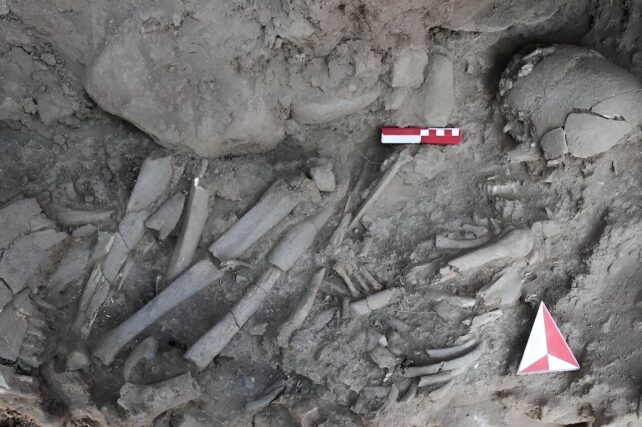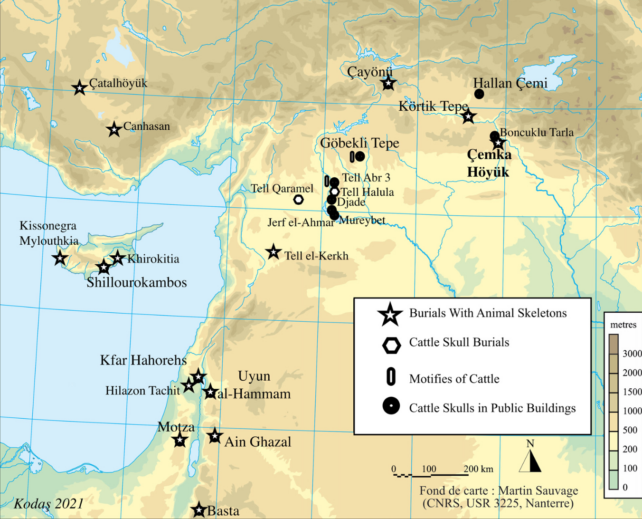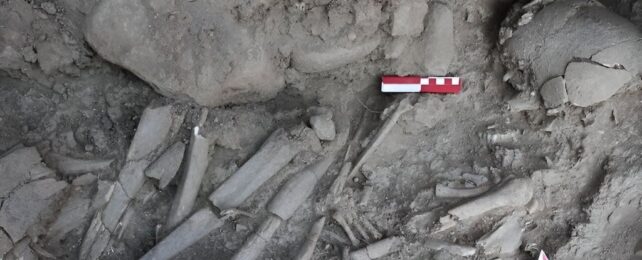Archaeologists think they have hit upon the ancient burial site of a female 'shaman' in southeast Türkiye.
In life, as in death, scientists suspect the early Neolithic woman was 'one with' the animals that used to roam the banks of the Tigris River.
In 2019, her remains were unearthed at a roughly 12,000-year-old settlement, called Çemka Höyük.
Her grave is a veritable menagerie of local fauna.
Buried under the limestone slab of what was once an ancient roundhouse, the woman's bones were found carefully sealed away with those of a partridge, a weasel-like mammal, a sheep or goat, a dog-like carnivore, and an extinct species of cattle, known as an aurochs.

Aurochs are thought to be the wild ancestors of today's cows, but scientists do not think they were domesticated in this region for another few thousand years. All the animals included in the grave are considered wild.
The upside-down skull of an aurochs was found placed atop the chest of the woman's skeleton.
"This finding provokes the idea that the early sedentary people at Çemka Höyük classified the animals in their environment and attributed different meanings to them," explains the team of researchers, who hail from Mardin Artuklu University and Bitlis Eren University in Türkiye.
"It could be therefore assumed that the woman buried here, had a special connection with this mythical world."

No other grave like this one is known to exist from the same time or place, but similar discoveries in other parts of the Middle East are interpreted as "traces of shamanic practices".
In 2008, for instance, another 12,000-year-old female skeleton was unearthed in Hilazon Tachtit Cave, Israel, also buried with a diversity of animals. She, too, is suspected of being a shaman.
At the very least, the woman buried at Çemka Höyük seems to have been a special member of her semi-settled community of hunters, gatherers, and fishers. She died between the ages of 25 and 30.
"Perhaps she just was a 'mad' or 'crazy' person touched by the 'spirits' of the other world and therefore feared by the majority of the community," hypothesize the archaeologists who found the grave.
The aurochs bones and the limestone slabs, they add, "should ensure that she is not returning from the dead."
Evidence suggests the aurochs bones found in the grave all came from the same individual, which would have been about a year and a half or two years old. Deep cuts on some of the bones indicate the animal was butchered for meat before being buried.
Even if the animal was slaughtered as part of a funerary feast, however, it's curious that the meat-bearing parts are missing from the grave. The bones appear to be specifically chosen for spiritual purposes.
The team suggests that the skull of the aurochs, for example, could represent the power of the living animal, possibly added to the grave to guard the body in the afterlife, or to keep bad spirits from returning.
The partridge bone is where the wing and body meet, and the weasel-like bone comes from the leg. Both could indicate "quick and sudden" movements, the researchers write.
Many different interpretations could explain the grave, the authors admit, and all of these hypotheses are extremely hard, if not impossible, to put to the test.
Een if the grave does not "represent the burial of a special person – a female shaman", it suggests that those who buried her held beliefs in animism and shamanism.
Let's hope the archaeologists didn't wake any evil spirits.
The study was published in L'Anthropologie.
